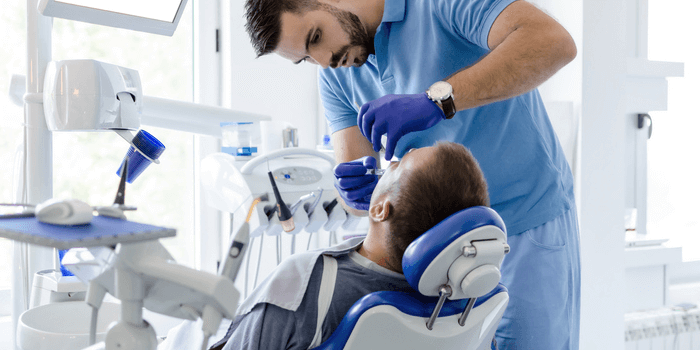Balancing a busy day of patients is only one part of this business. Dentists need to handle different financial challenges, including juggling overhead costs and figuring out a way to make adjustments. In general, a dentist’s overhead costs on average, 75% of their income.
What are the overhead costs of a Dental Business?
Overhead expenses aren’t limited to the costs of keeping your clinic running day-to-day. They can include business expansion costs as well and equipment upgrade costs. Broadly, they can be divided into fixed costs and variable costs.
When it comes to a medical practice, the fixed and variable costs are based on the volume of patient care. For instance, costs such as; rent, utilities, and staff salaries are fixed costs. These are not dependent on the volume of patients that visit your clinic. The other is variable costs, such as lab tests, which depend on the number of patients that come into your clinic. Any cost that is not associated with your clinic’s income, is an overhead cost.
The most common categories of overhead costs for a dental clinic include:
- Rent
- Equipment
- Office supplies
- Marketing
- Staff salaries
- Labs
It’s no surprise that the largest expense category is staff. This is because it includes not just your staff’s salaries, but also employee compensation, payroll taxes, and insurance. The second biggest expense is laboratories, followed by rent, equipment and other miscellaneous items.

How do you know if your overhead is too high?
Monitoring your overhead expenses shouldn’t be complicated. Once you’ve made a list of your clinic’s expenses, you can categorize them as above. The percentage of expenses from each category will give you a good idea of where most your profits are being spent. If you don’t have any or much liquid cash after meeting your overhead costs, it’s time to cut back.
Most dentist clinic owners might argue that it’s these costs that keep their business successful. In fact, the overhead expenses for high-performing and low-performing dental clinics are almost the same. Since 2009, expenses for owning and operating a clinic have increased at an exorbitant rate of 18.6%. Dentists and specialists of struggling and successful businesses alike are stuck between a rock and a hard place—low production and higher costs.
How your Practice can Reduce Overhead Costs
The best way to reduce overhead costs is to start with the categories that cover most of the costs. Let’s take the first one- the staff. Most dental clinics reported that over 33% of overhead costs went to staff, when it should ideally be around 25%. Digging a little deeper, it was found that despite declining revenue that most clinics faced today, employee compensation, bonuses and insurance costs kept increasing. This meant clinics were actually shelling out more to keep their staff, disregarding market rates entirely while doctors were taking home less. Your clinic might need to cut down one or two staff positions if it is in a similar predicament.
Similarly, analyze other high-expense categories. Compare these numbers with the industry national averages (as a percentage of revenue):
- Rent – 6-7%
- Lab – 6%
- Supplies – 6%
- Marketing – 2-3%
- Accounting – 1-2%
Evaluate all categories that are running higher than they should, and see what your clinic can do to bring them down. Your total overhead costs need not be dependent on individual cost percentages alone, though. For instance, one large category cut, or several smaller cuts can bring your total overhead cost down. Keep in mind that your profits increase by the same percentages your overhead costs are reduced. When your revenue decreases, your overhead costs may look higher.
Conclusion
While your profit isn’t the only factor to help you understand your clinic’s overall financial health, it’s a major part of it. While a clinic that’s quite young may yet make a low profit because of its starting debts, one that’s been established for a good number of years should make a better net profit. A good net profit percentage depends on your business model as well. For instance, a larger clinic with more staff, more equipment and paying for more rental space should make a net profit of 15-20%. If you’re a solo owner and clinician, it’s not a good number.
Ultimately, any adjustments your business makes to reduce overhead costs shouldn’t have a major impact on its everyday operations. Nothing should impact your level of efficiency. Dentists and clinicians should focus on their monthly numbers and study their impacts to target problem areas and work to improve them. If your business is unable to meet its short-term obligations due to balancing overhead costs, it’s problematic. You never want to be in a position where your business is static. Taking a healthcare financing option can help your business not only meet tight costs and budget restraints, but also give the extra nudge for any future plans or financial commitments your clinic has. Eventually, this ensures your clinic’s financial success.






